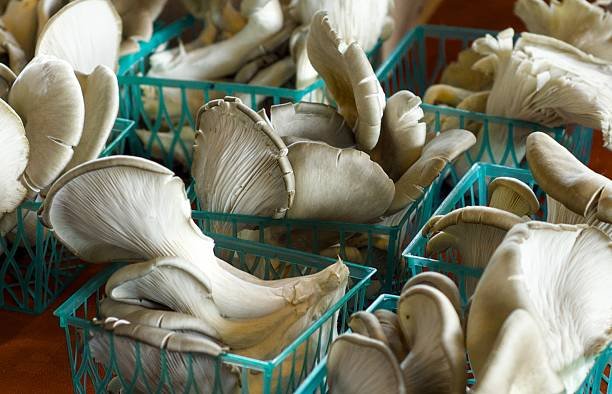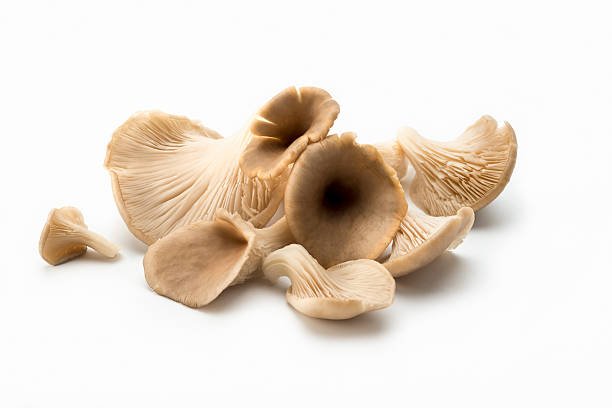The demand for fresh, locally-grown oyster mushrooms has never been higher. As more restaurants prioritize farm-to-table ingredients and consumers seek sustainable food options, mushroom growers are discovering lucrative opportunities right in their backyard. Whether you’ve just harvested your first crop or you’re looking to expand your existing oyster mushroom operation, connecting with the right buyers can transform your hobby into a thriving business.
Finding reliable buyers for your oyster mushrooms requires more than just growing a quality product—it demands strategic planning, market knowledge, and relationship-building skills. This comprehensive guide will walk you through proven strategies to identify potential customers, prepare your mushrooms for market, and build lasting partnerships that ensure consistent sales and sustainable growth for your mushroom farming business.
Understanding the Oyster Mushroom Market

The oyster mushroom market offers diverse opportunities for growers willing to understand their local landscape. Current market demand continues to grow as consumers embrace mushrooms for their nutritional benefits, unique flavors, and versatility in cooking.
Your target customer segments typically fall into several categories: restaurants seeking fresh, local ingredients; grocery stores looking to stock specialty produce; farmers market customers interested in artisanal foods; and food distributors serving institutional clients. Each segment has distinct requirements, price points, and purchasing volumes that influence your sales strategy.
Successful oyster mushroom growers often focus on one or two primary customer segments initially, then expand as their production capacity grows. Restaurants, for example, typically purchase smaller quantities but pay premium prices for consistent quality and unique varieties. Grocery stores require larger volumes and standardized packaging but offer predictable, ongoing sales relationships.
Preparing Your Mushrooms for Sale
Quality preparation separates professional growers from hobbyists. Proper harvesting techniques ensure your oyster mushrooms maintain peak freshness and visual appeal when they reach buyers.
Harvest your oyster mushrooms when the caps are still relatively small and firm, typically when they’re 2-4 inches in diameter. Cut clusters at the base rather than pulling them, which can damage the growing medium and affect future flushes. Handle your mushrooms gently to prevent bruising, which quickly diminishes their market value.
Cleaning and sorting require attention to detail. Remove any substrate particles, trim damaged portions, and sort mushrooms by size and quality grade. Many successful growers create different price tiers—premium mushrooms for high-end restaurants, standard grade for grocery stores, and seconds for value-conscious customers.
Packaging significantly impacts shelf life and buyer perception. Use breathable containers that allow air circulation while preventing moisture loss. Perforated plastic bags or vented clamshells work well for most applications. Label packages clearly with harvest date, variety, and your farm information to build brand recognition.
Finding Buyers: Direct Sales Channels
Direct sales channels often provide the highest profit margins and strongest customer relationships for mushroom growers. Farmers markets represent an excellent starting point, allowing you to interact directly with consumers, receive immediate feedback, and build a loyal customer base.
Success at farmers markets requires more than just showing up with mushrooms. Create an attractive display that showcases your product’s freshness and quality. Offer samples whenever possible—many customers hesitate to try unfamiliar mushroom varieties until they taste them. Provide recipe cards and cooking suggestions to help customers feel confident about purchasing.
Consider developing a Community Supported Agriculture (CSA) program for regular customers. Weekly or bi-weekly mushroom subscriptions provide predictable income while building strong customer relationships. One beginning mushroom farmer built a thriving business by focusing on unique mushroom varieties and selling directly to customers at farmers markets, eventually expanding to supply local restaurants.
Roadside stands and on-farm stores work particularly well for growers with high-traffic locations. These venues allow customers to see your growing operation, which builds trust and justifies premium pricing for locally-grown, sustainable products.
Finding Buyers: Indirect Sales Channels
Restaurants represent one of the most lucrative markets for oyster mushroom growers. Chefs appreciate fresh, local ingredients and often pay premium prices for consistent quality and unique varieties. Building relationships with restaurants requires patience and persistence, but the resulting partnerships can anchor your business.
Start by identifying restaurants that emphasize local sourcing and seasonal menus. Visit during slower periods to speak directly with chefs or kitchen managers. Bring samples of your best mushrooms and be prepared to discuss your growing methods, harvest schedule, and available quantities.
A small-scale farmer increased sales by 40% after partnering with local restaurants and implementing a robust online marketing strategy. The key was consistent quality and reliable delivery—restaurants depend on their suppliers to maintain menu consistency.
Grocery stores present opportunities for larger volume sales but require meeting specific standards for packaging, labeling, and delivery schedules. Many independent grocers are more flexible than large chains and actively seek local suppliers to differentiate themselves from competitors.
An oyster mushroom grower secured a contract with a major grocery store chain after obtaining organic certification and consistently delivering high-quality mushrooms. The certification process required additional documentation and inspection, but it opened doors to premium market segments.
Online Sales and Marketing Strategies
Digital marketing expands your reach beyond immediate geographic boundaries and allows you to connect with customers who specifically seek local, sustainable products. Creating a professional website or online store showcases your mushrooms, provides information about your farm, and facilitates online orders.
Social media platforms, particularly Instagram and Facebook, work exceptionally well for food products. Share photos of your mushroom farm, harvest processes, and finished products. Post recipes featuring oyster mushrooms and educational content about their nutritional benefits and culinary uses.
Online marketplaces like Etsy, local food hubs, or regional farm-to-consumer platforms can provide additional sales channels. High-quality photos and detailed product descriptions are essential for online success. Consider partnering with food bloggers who can feature your mushrooms in recipes and articles, reaching wider audiences through their established platforms.
Email marketing helps maintain customer relationships and announces new products or special offers. Build an email list through your website and social media channels, then send regular newsletters with farm updates, seasonal availability, and cooking tips.
Pricing Strategies That Maximize Profitability
Effective pricing balances profitability with market competitiveness. Cost-plus pricing provides a foundation by calculating your total production costs—including labor, materials, and overhead—then adding your desired profit margin.
Research competitive pricing in your local market to understand what customers expect to pay. However, avoid competing solely on price, which erodes profit margins and devalues your product. Instead, focus on value-based pricing that reflects your mushrooms’ unique qualities: local sourcing, organic growing methods, superior freshness, or unusual varieties.
Tiered pricing accommodates different customer segments and purchase volumes. Offer premium grades for high-end restaurants, standard grades for grocery stores, and value pricing for bulk purchasers. Wholesale pricing for restaurants and distributors should reflect larger purchase volumes while maintaining adequate profit margins.
Bundle pricing creates additional value by pairing oyster mushrooms with complementary ingredients or including recipe cards and cooking instructions. This strategy particularly works well at farmers markets and direct-to-consumer sales.
Legal and Regulatory Considerations
Understanding food safety regulations protects your business and ensures customer safety. Most jurisdictions require basic permits and licenses for selling food products, though requirements vary significantly by location.
Contact your local health department to understand specific requirements for mushroom sales. Some areas have minimal regulations for farm-direct sales, while others require commercial kitchen facilities or specific certifications for retail sales.
Organic certification, while optional, significantly increases market value and appeals to environmentally conscious consumers. The certification process involves documentation of growing methods, regular inspections, and annual fees, but many growers find the premium pricing justifies these costs.
Proper labeling must include mushroom variety, net weight, harvest date, and your farm contact information. Some jurisdictions require additional information like nutritional facts or allergen warnings.
Liability insurance protects your business from potential claims related to product safety or quality issues. Many farm insurance policies can be extended to cover direct sales activities.
Building Long-term Success
Scaling your mushroom business requires balancing increased production with maintained quality standards. As demand grows, resist the temptation to expand too quickly—consistent quality and reliable supply are more valuable than maximum volume.
Building strong relationships with buyers forms the foundation of sustainable success. Provide consistent quality, reliable delivery, and excellent customer service. Be responsive to feedback and willing to adapt to customer needs. Consider implementing loyalty programs or volume discounts to encourage repeat business.
Stay informed about market trends and competitor activities to identify new opportunities. Attend industry conferences, join mushroom grower associations, and network with other local farmers to share knowledge and resources.
Growing Your Mushroom Empire
Success in selling oyster mushrooms combines quality production with smart marketing and strong relationships. Focus on understanding your local market, preparing your products professionally, and building trust with buyers through consistent quality and reliable service.
Start with one or two sales channels that match your production capacity and goals, then expand gradually as your business grows. Remember that building a sustainable mushroom business takes time—prioritize quality and customer relationships over rapid expansion.
Whether you’re selling at farmers markets, supplying local restaurants, or developing an online customer base, the key lies in differentiating your mushrooms through superior quality, local sourcing, and exceptional customer service. Your oyster mushroom business can flourish by combining excellent growing practices with strategic marketing and genuine care for your customers’ needs.


